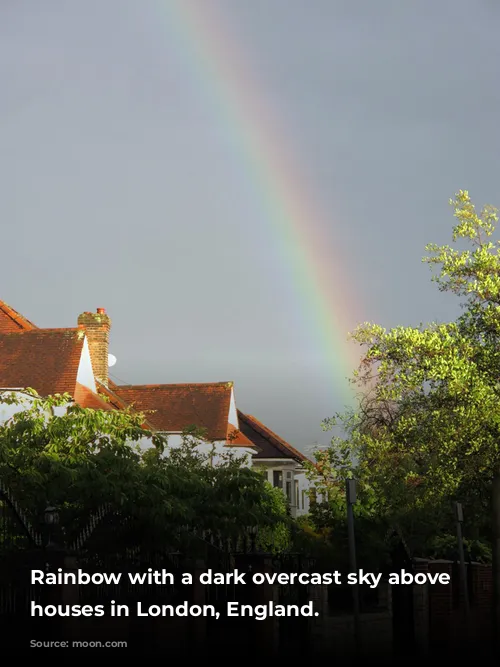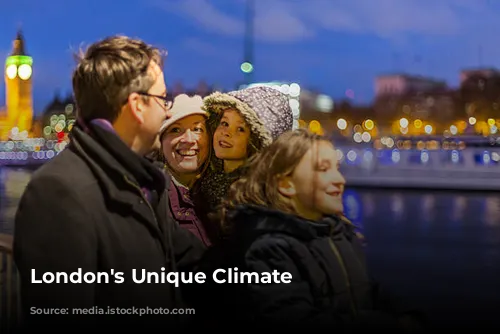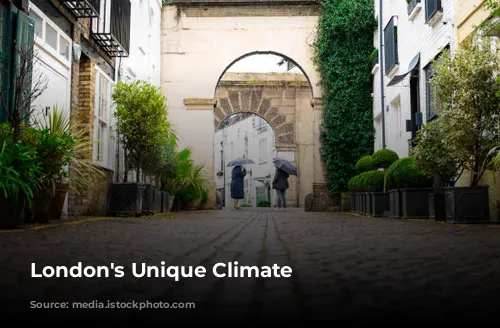Living in London, you’ll quickly notice the city’s unique relationship with daylight. The days are incredibly short during winter, with the sun barely peeking above the horizon by 8am and disappearing again before 4pm. This can be a bit disheartening, especially if you’re used to sunny California! On the other hand, the long days of summer can be equally challenging, as the sun rises as early as 4am, making it tough to get a good night’s sleep. You might even hear birds chirping at 3am! It’s hard to get kids to bed when it’s still light out at 9:20pm in June. Despite the sunshine, most of us still need our eight hours of sleep. To combat the early morning sunlight, many people in London rely on blackout curtains, which also provide some thermal insulation during colder months.
Temperate Climate, but Don’t Forget the Rain
Despite its northerly location, London enjoys a surprisingly mild climate thanks to the Gulf Stream. This ocean current brings warm water from the Caribbean up to Western Europe, making London warmer than it should be for its latitude. This means that London rarely experiences extreme cold in winter or stifling heat in summer. The average daytime temperature in January is around 8°C (46°F), while the average high in July is a comfortable 22°C (73°F). You might get a few days in the summer where temperatures climb above 25°C (77°F) or even 30°C (86°F), but even then, it’s not unbearable. In winter, temperatures can drop to freezing or below, but most homes have heating systems to keep you warm.
One thing you’ll definitely need to prepare for is rain. Even though the average rainfall isn’t that high (around 23 inches/58 centimeters a year), it seems like London gets a drizzle almost every day. The best approach is to always have a small umbrella or waterproof jacket on hand. While London occasionally gets thunderstorms with heavy downpours, the rain is generally light.

Snow: A Rare but Disruptive Visitor
You might be surprised to learn that snow is relatively uncommon in London. The city generates so much heat from buildings and cars that it rarely gets cold enough for snow to settle. In fact, London is generally a few degrees warmer than the surrounding countryside. When it does snow, however, it can create chaos. London comes to a standstill, with transportation systems grinding to a halt. The Underground, which is only underground in the city center, is especially susceptible to snow and ice, as the lines run above ground in the suburbs. Train services can also be disrupted by freezing weather and snow, leading to cancellations and delays.
But the biggest problem is the traffic. Even a small amount of snow can bring London’s roads to a standstill. Many people are not accustomed to driving in snowy conditions and often misjudge the situation, leading to accidents.

Snow-Related Chaos: A Personal Story
I once experienced the full force of London’s snow-related chaos firsthand. I was driving to a shopping mall in North London one late afternoon when snow started falling. I rushed through my shopping, hoping to beat the rush hour, which I knew would be worse because of the snow. But I was too late. In just an hour, a couple of inches of snow had fallen. For those of you who are used to winter snow, two inches is nothing, but in London, it can cause major gridlock. It took me over two hours to escape the mall’s parking lot! The snow had fallen so quickly that the roads weren’t gritted with sand and salt. And, to make matters worse, the mall’s entrance and exit were on a slight hill. Car after car failed to make it up the incline in the snowy conditions. This, combined with drivers unfamiliar with snowy driving, led to accidents and gridlock. I later learned that some people were stranded at the mall that night and had to spend the night there. So be warned: if it starts snowing in London, get ready for a standstill!

Climate Change: A Looming Concern
London’s climate is changing. After a period of mild winters, the past few years have brought colder temperatures and more rain. This shift in weather patterns might be a sign of climate change, which could have significant consequences for London. If these changes are related to climate change, London will need to adapt and prepare for more extreme weather events, including heavy rain and snow.

London’s Summers: Pleasantly Warm, But No Air Conditioning
On the other end of the spectrum, London’s summers are usually pleasantly warm, with temperatures rarely reaching sweltering levels. You might get a few days in the low 80s (F), which is a welcome break from the cool, damp weather. Londoners flock to the parks to soak up the sunshine. But London homes are not usually equipped for hot weather. You won’t find many houses with air conditioning. I remember only one unbearably hot summer in my 20 years of living in London – the summer of 2003. Other than that, hot spells are usually short, lasting a week or two. For the most part, London’s summers are fairly damp, as any Wimbledon tennis fan can tell you!









